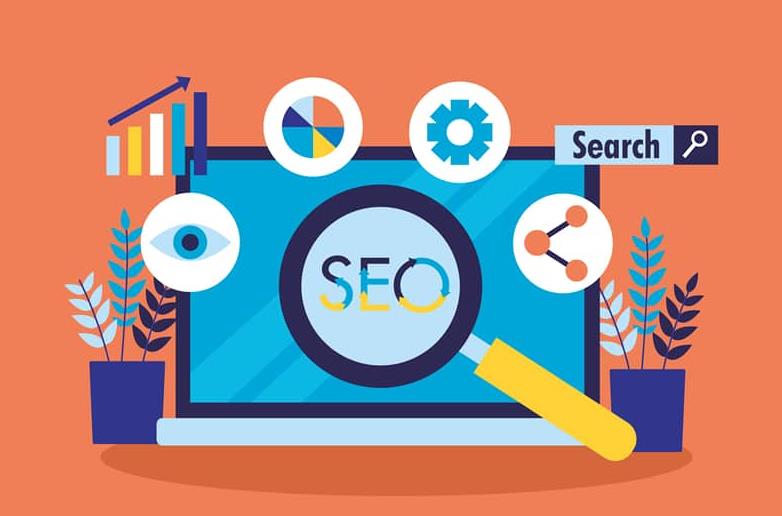AI-generated images are becoming more popular and accessible, thanks to tools like DALL-E and Craiyon. These tools allow users to create realistic and creative images from text prompts, such as “a cat wearing a hat” or “a skyscraper made of cheese”. But how can these images be used for SEO purposes? And what are the benefits and challenges of using them on your website?
AI-generated images are images that are created by artificial intelligence (AI) models, such as neural networks. These models are trained on large datasets of images and learn to generate new images that are similar to the ones they have seen before. For example, DALL-E is a tool that uses a neural network to generate images from text prompts. It can create images that are realistic, abstract, or even surreal, depending on the input. Craiyon is another tool that uses a neural network to generate images from sketches. It can turn simple drawings into detailed and colorful images.

AI-generated images can be used for various purposes, such as art, entertainment, education, and research. They can also be used for SEO, as they can help to create unique and engaging content for your website.
Why Use AI-Generated Images for SEO?
Using AI-generated images for SEO can have several benefits, such as:
- Increasing user engagement: AI-generated images can capture the attention and curiosity of your visitors, as they can be surprising, funny, or informative. They can also encourage users to spend more time on your website, as they may want to explore more of your content or interact with your images.
- Improving content quality: AI-generated images can enhance the quality and relevance of your content, as they can provide visual support for your text or illustrate concepts that are hard to explain with words. They can also help to create a consistent and appealing visual style for your website.
- Boosting content diversity: AI-generated images can help to diversify your content, as they can offer new and original perspectives on your topic or niche. They can also help to avoid duplicate or generic images that may harm your SEO performance.
How to Use AI-Generated Images for SEO?
Using AI-generated images for SEO requires some planning and experimentation, as there are some challenges and limitations to consider, such as:
- Quality and accuracy: AI-generated images are not always perfect, as they may contain errors, artifacts, or inconsistencies. They may also not match the text prompt exactly, or generate images that are inappropriate or offensive. Therefore, it is important to check the quality and accuracy of the images before using them on your website, and to edit or discard them if necessary.
- Originality and uniqueness: AI-generated images are not always original or unique, as they may be influenced by the images that the model has seen before. They may also generate images that are similar to the ones that already exist on the web, which may cause duplicate content issues. Therefore, it is important to verify the originality and uniqueness of the images before using them on your website, and to use tools like reverse image search or plagiarism checkers to avoid any problems.
- Ethics and legality: AI-generated images may raise some ethical and legal questions, such as who owns the rights to the images, how to attribute the source of the images, and how to respect the privacy and consent of the people or objects depicted in the images. Therefore, it is important to follow the best practices and guidelines of the tools that you use, and to consult with a legal expert if you have any doubts.
To use AI-generated images for SEO effectively, you should also follow some general tips, such as:
- Use relevant and descriptive text prompts: The text prompts that you use to generate the images should be relevant and descriptive, as they will influence the quality and relevance of the images. You should also use keywords and phrases that are related to your topic or niche, as they will help to optimize the images for search engines.
- Use alt text and captions: The alt text and captions that you use for the images should be informative and descriptive, as they will help to provide context and meaning for the images. They will also help to make the images accessible for users who have visual impairments or use screen readers, and to improve the SEO performance of the images.
- Use appropriate image formats and sizes: The image formats and sizes that you use for the images should be appropriate for your website and your audience, as they will affect the loading speed and the user experience of the images. You should also use tools like image compression and responsive design to optimize the images for different devices and browsers.
Examples of AI-Generated Images for SEO
Here are some examples of how AI-generated images can be used for SEO, based on the text prompts that were used to create them:
- A guide to meditation: An image of a person meditating in a peaceful and serene environment, with a caption that says “Learn how to meditate and improve your mental health and well-being”.
- The best pizza places in New York: An image of a pizza slice with various toppings, with a caption that says “Discover the best pizza places in New York and enjoy the most delicious and authentic pizza in the world”.
- How to grow tomatoes in your backyard: An image of a tomato plant with ripe and juicy tomatoes, with a caption that says “Follow these simple steps and tips to grow your own tomatoes in your backyard and enjoy fresh and organic tomatoes all year round”.
